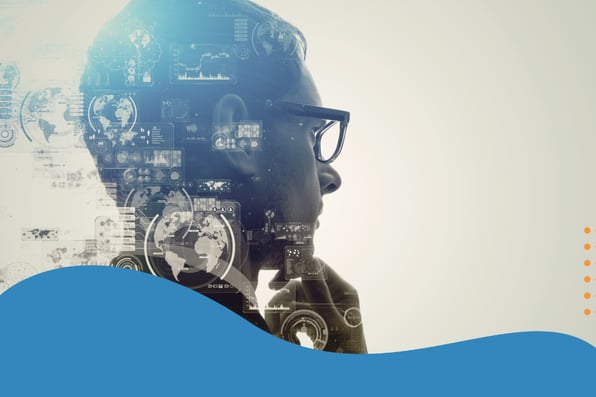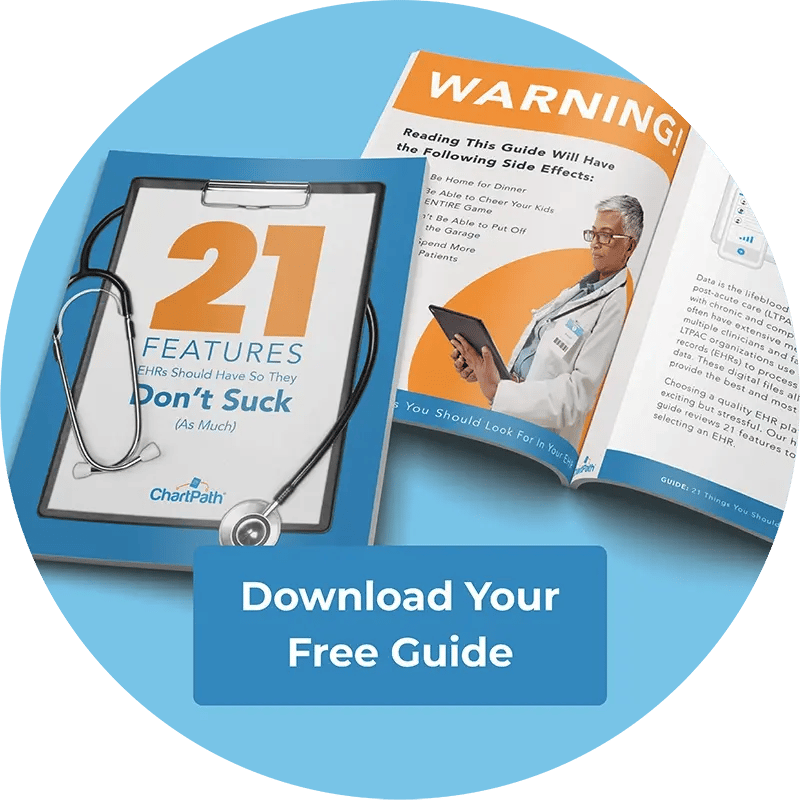What Stanford’s AI Report Means for LTPAC Providers

Why It’s Time to Get Strategic with AI
Artificial intelligence is no longer a future concept — it’s a present-day force reshaping industries. And nowhere is that more evident than in healthcare. The newly released 2025 AI Index Report from Stanford University’s Institute for Human-Centered Artificial Intelligence (HAI) paints a striking picture of AI’s rapid growth, rising sophistication, and expanding footprint across clinical and administrative workflows.
While the report covers AI across all sectors, the implications for long-term, post-acute care (LTPAC) are profound. As LTPAC providers face increasing documentation burdens, staff shortages, and compliance pressures, AI represents not just a tool — but a strategic advantage.
Below, we break down the most relevant takeaways from Stanford’s findings and what they mean for LTPAC leaders — plus how ChartPath is helping organizations take practical, proven steps forward.
AI Is Getting Faster, Smarter, and More Capable — Fast
One of the most headline-grabbing insights from the Stanford report is just how quickly AI capabilities are improving. Stanford tracked a nearly 19-point leap in performance on the Massive Multitask Language Understanding (MMMU) benchmark between 2023 and 2024 — a complex test that spans law, medicine, and other high-stakes fields.
Even more striking is the surge in AI-enabled medical devices. In 2015, only six such tools were approved by the FDA. By 2024, that number ballooned to 950. The message is clear: AI isn’t theoretical. It’s showing up in diagnostic tools, risk prediction models, and clinical decision support — and it’s being regulated and deployed in real care settings.
For LTPAC providers, this means it’s time to think beyond pilots and experiments. AI’s maturity is accelerating. The risk is no longer adopting too early — it’s falling behind.
Documentation Burden: AI’s Most Immediate Win in LTPAC
One of the most immediate and impactful applications of AI in healthcare today is automated clinical documentation. For LTPAC physicians and staff, this is a game-changer.
The Stanford report highlights the massive investment flowing into generative AI, with over $33.9 billion in global private investment last year alone. Much of this funding is driving innovations in natural language processing — the same core technology powering ambient scribing tools like those embedded in ChartPath.
These tools listen to clinician-patient encounters, generate structured notes, and integrate them directly into the EHR — dramatically reducing manual typing and after-hours charting. In LTPAC, where providers often care for dozens of patients across multiple facilities, that’s not just a convenience. It’s a lifeline.
At ChartPath, our ambient scribing solution is tailored for the complex, mobile workflows of LTPAC, ensuring notes are not just accurate, but usable, compliant, and context-aware. It's AI that truly understands the setting it's built for.
Responsible AI: A Growing Priority — and a Strategic Imperative
As AI adoption surges, concerns about misuse and unintended harm are rising in parallel. Stanford’s report shows a significant uptick in reported AI incidents and controversies — from biased outputs to hallucinated results in medical applications.
In response, new benchmarks like HELM Safety and FACTS are being developed to evaluate factual accuracy and model reliability. The emphasis is clear: organizations must ensure the AI they adopt is not only powerful, but responsible.
This is especially critical in LTPAC, where coding errors or documentation gaps can trigger audits, reimbursement delays, or even compliance violations.
That’s why ChartPath takes a “vetted AI, no guesswork” approach. We partner with top-tier AI researchers and product teams to ensure our ambient scribe and auditing tools meet the highest standards for accuracy, transparency, and clinical appropriateness.
With ChartPath, providers know what’s under the hood — and that it’s built to support, not surprise, their teams.
Revenue Integrity: AI as a Compliance Ally, Not a Risk
Beyond saving time, AI can also play a powerful role in ensuring coding accuracy and revenue protection — especially as CMS and other payers ramp up audits of LTPAC documentation.
Stanford’s report notes that while AI can accelerate workflows, it must be coupled with safeguards to avoid introducing new liabilities. At ChartPath, we embed AI-driven auditing directly into the documentation process, flagging issues like:
-
Missing or non-billable diagnoses
-
Incomplete encounter elements
-
Risk of upcoding or undercoding
The result? Fewer denials, cleaner charts, and greater confidence that documentation supports the care delivered — without adding to providers’ workload.
Global Momentum, Local Action: Why LTPAC Can't Wait
Stanford’s report shows the U.S. continues to lead globally in AI model development, with 40 major models launched in 2024 compared to China’s 15. But the race is heating up — and innovation is increasingly cross-border and cross-sector.
For LTPAC organizations, that means the tools are here — and more are coming. But it also means discerning what's hype and what's helpful is harder than ever.
That's where ChartPath makes a difference. As a partner deeply embedded in the LTPAC space, we cut through the noise. We don’t just bolt on AI features — we build solutions from the ground up to solve real problems our clients face every day.
Where Do You Go From Here?
AI is advancing at breakneck speed — and for LTPAC providers, the risk isn’t just inaction. It’s missing out on a once-in-a-generation opportunity to reshape care delivery, reduce burnout, and achieve operational excellence. Stanford’s 2025 AI Index shows us that the AI wave isn’t coming — it’s already here. Check out the full report here.
If you’re ready to move from curiosity to capability, ChartPath is ready to help.
Blog Post Tags
AIGet Awesome Content Delivered Straight to Your Inbox!
Posts by topic
- EHR
- Better Charting
- LTPAC
- AI
- RCM
- Compliance
- Healthcare Trends
- Press Release
- GUIDE
- reporting
- Artificial Intelligence
- Assisted Living
- Automation
- Behavioral Health
- Business
- Events
- General
- MIPS
- Operations
- Patient Outcomes
- Physician Billing Services
- Population Health Management
- Resumption of Care
- SNF
- TCM
- Value Based Care
- eCR
- interoperability
- partners
- regulations
- regulatory See All See Less




